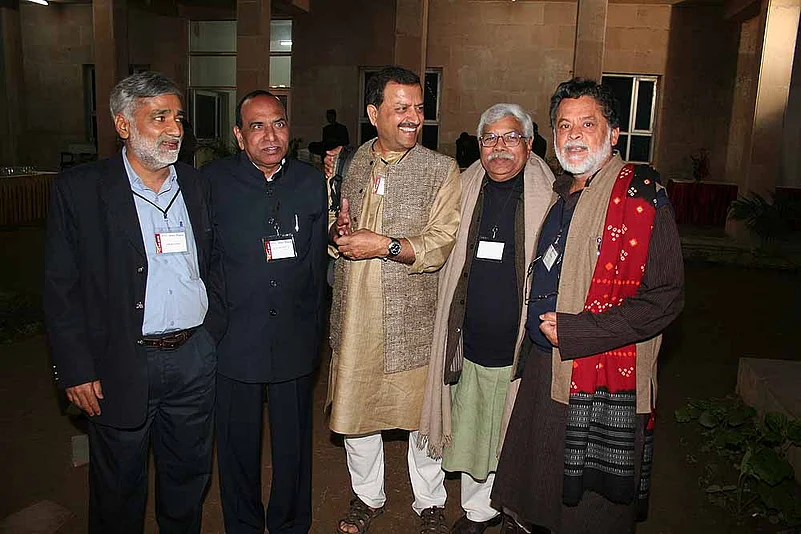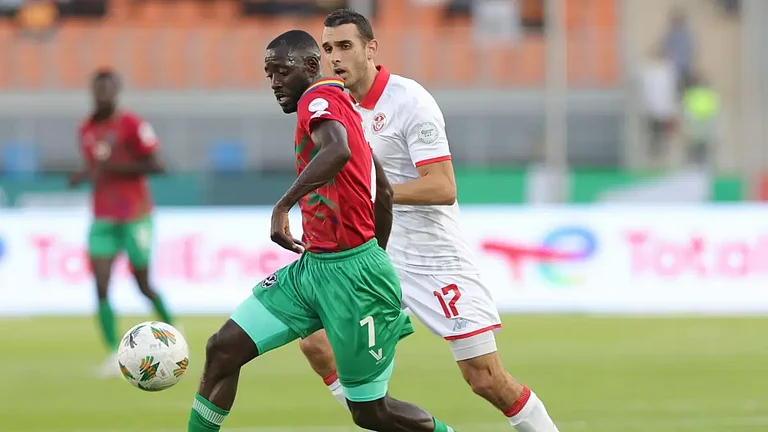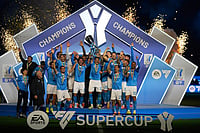Every year in summer, Jitendra Nath embarks on a long and arduous drive to Ranchi, his hometown 1,235 km away. Nath, a businessman who runs an event management company in the national capital, can afford to fly. But he still prefers to drive through cities en route to catch up with his batchmates, many of whom are in the civil services. He religiously hosts reunions and is a regular fixture at these get-togethers.
Chandrashekhar Tibrewal undertakes an even longer trip, from Boston in the US. Once in two years, he also organises a ‘biennale’ for ‘first decade JNUites’. Tibs to friends, he laughs over a trans-Atlantic phone call. “You won’t believe this, but friends call me up from India to get even their railway reservations done,” he says. Resourceful, his friends are aware that Tibs keeps in touch with batchmates who are in the railways and elsewhere and will happily work the phones. Nath enjoys a similar reputation and friends pushed into a corner fall back on him even now for help. “My file is stuck with so and so...do you know him by any chance?”
That’s what friends are for, isn’t it? Indeed, it’s the one thing in common between the elite and the one pejoratively called ‘HMT’ (Hindi medium type)—networks can be very, very useful. This is best exemplified by the immortal words of a principal of a Jesuit college in Bihar. He, it is said, exhorted ex-students to bond because, who knows, the I-T officer conducting a raid on their premises 15 years hence could turn out to be an old boy!
The non-metro networks are getting savvy too: for instance, the Netarhat Public School, a Hindi medium school in the picturesque Netarhat valley in Jharkhand, used to feed its alumni a regular newsletter updating them about developments in the region, literature etc. “Our former students are pursuing higher studies all over the country and many of them will be appearing in competitive exams and facing interview boards,” the then principal had explained, “and therefore we think it would be useful to keep them informed.” Similarly, Panjab University in Chandigarh has a separate department and website to cater to alumni. Even the bhu Management School has a strong alumni network.
It will take awhile, let’s say 5-10 years, before batches from the early 1990s (when the UPSC started allowing aspirants to write exams in regional languages) to reach positions of seniority and call the shots. Which may not happen also. A course correction appears to have taken place, says Ashok Singh, an IIT Kanpur alumnus who has been coaching IAS aspirants for over three decades. The civil services exam is once again skewed in favour of “convent-educated, English-medium types”.
Actually, in both the Indian Police Service (IPS) and the Indian Administrative Service (IAS), concede several serving officers, caste has been the ultimate network—long before LAN (local area network) and WAN (wide area network) became familiar acronyms in the country. “Make no mistake,” an IAS officer once said, only half in jest, “the Kayasths and the Brahmins are the ones who are running the country”. An officer of the West Bengal cadre, a Bania from Bihar, admitted that his seniors who were Kayasth believed him to be a Kayasth as well and lamented that Bihari Kayasths had occupied prize posts to the detriment of Bengali Kayasths.
Caste, they agreed, transcends all other affiliations. “It does not matter where you studied or which university you went to. Caste identities play a major role in civil services because they endure,” quipped the CEO of a company, an IIM Ahmedabad graduate of the 1989 batch with strong family ties in the IAS and the IPS. “The number of ‘close relative’ bureaucrats in the civil services is quite startling...a research study on the topic would be revealing,” he adds. Like kings and landlords in medieval times, the inbreeding is apparently helped by—what else?—marital alliances forged within the civil services.

Which babu? At a felicitation ceremony during the Patna Science College alumni meet
Naturally, in such a situation, trading information is par for the course. Notings in files, proposals, recommendations, objections and decisions are regularly shared with interested parties, provided they are trustworthy and PLUs (people like us). “Nothing in the government can really remain a secret with the kind of networks that civil service officers enjoy,” says a cynical officer. “Some do it slyly, some innocently but very few can resist the temptation of showing off or using the power of patronage to oblige friends, relatives and batchmates”.
But do the desi make officers flock together and form a network of their own? Not really, it seems. “The HMT do not remain HMT for long,” explains an officer, “their upward mobility, often after marriage into wealthier and more cosmopolitan families, is faster, their aspirations more urgent and their desire to maintain distance from people with similar backgrounds absolute.”
Outside the civil services, strangely, caste does not seem to exert the same kind of influence. Earlier this year, Prasenjit Palit, a chartered accountant from Calcutta, Nidhi Chaturvedi, a director in the Rajya Sabha secretariat, T. Satyan, who’s an advisor to the federal government in Australia, and Sakir Ali, a software businessman from Hyderabad, along with others met in New Delhi to discuss how to salvage the school they had gone to, a Kendriya Vidyalaya in Barauni (Bihar), which has been ‘abandoned’ following the closure of the fertiliser factory there and has been taken over by the Bihar government. None of them were from Bihar but they had chipped in earlier to fund a gen-set, water filter etc for the school. But this meeting was convened to find ways for more ambitious investment.
Similarly, Atul Sahay, president of an IT firm in California, prefers to write his Facebook posts in Hindi and boasts of a director-general of police, two senior IAS officers, an ICICI Bank vice-president, a doctor in the UK, a senior functionary in the RBI and a commissioner of income tax among his batchmates. All of them went to Hindi medium schools and continue to keep in touch. Traditional logic suggests that residential schools and colleges allow for stronger bonding but Sahay and his friends were day scholars. That in no way prevented them from cementing an informal network though.


























